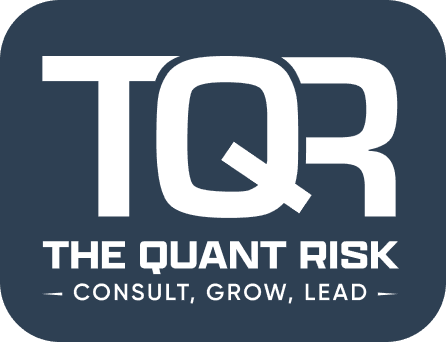
How to Mitigate Third-Party Risks?
In today’s interconnected business environment, organisations frequently rely on third-party vendors for critical services and support. While this collaboration boosts efficiency and innovation, it also introduces significant security risks. Vendors, particularly those with access to sensitive data or operational systems, can become potential weak links in your security chain if not properly managed.
In today’s interconnected business environment, organisations frequently rely on third-party vendors for critical services and support. While this collaboration boosts efficiency and innovation, it also introduces significant security risks. Vendors, particularly those with access to sensitive data or operational systems, can become potential weak links in your security chain if not properly managed.Vendor risk management (VRM) is the process of identifying, assessing, and mitigating these risks throughout the vendor lifecycle. Without a robust VRM strategy, your organisation is vulnerable to:
To minimise risks, enforce strict security requirements for all vendors, including:
Your contract with a vendor should outline their security responsibilities, including compliance with regulatory requirements and industry standards. It should also detail:
These contractual agreements can protect your organisation from legal or regulatory repercussions in case of a breach.
Managing vendor risk doesn’t end with signing a contract. Continuous monitoring of vendor performance and compliance is essential to stay ahead of emerging threats.
When a vendor’s services are no longer required, ensure a secure and seamless offboarding process. This includes:
A well-defined offboarding process ensures that no vulnerabilities are left behind when your partnership with a vendor concludes.
Third-party risks are an inevitable part of doing business in today’s digital landscape, but they don’t have to leave your organisation exposed. A robust vendor management strategy, combined with effective information security practices, can significantly reduce your risk of data breaches, compliance violations, and operational disruptions.
Why is Vendor Management Critical to Information Security?
In today’s interconnected business environment, organisations frequently rely on third-party vendors for critical services and support. While this collaboration boosts efficiency and innovation, it also introduces significant security risks. Vendors, particularly those with access to sensitive data or operational systems, can become potential weak links in your security chain if not properly managed.Vendor risk management (VRM) is the process of identifying, assessing, and mitigating these risks throughout the vendor lifecycle. Without a robust VRM strategy, your organisation is vulnerable to:
- Data Breaches: Vendors may have access to sensitive information, making them targets for cybercriminals.
- Compliance Violations: Non-compliance with data protection regulations like GDPR or HIPAA through third parties can result in fines.
- Operational Disruptions: A vendor’s lack of preparedness or breach can impact your business continuity and reputation.
Key Steps to Mitigate Third-Party Risks
Conduct Vendor Risk Assessments
Before onboarding any third-party vendor, perform a thorough risk assessment to evaluate their security practices, controls, and compliance with industry regulations. This should include:- Reviewing the vendor’s data protection policies.
- Conducting a security audit of their systems and processes.
- Understanding the scope of their access to your systems and data.
- Risk assessments provide a clear picture of potential vulnerabilities that may arise from the partnership, helping you make informed decisions.
Implement Strong Security Protocols
To minimise risks, enforce strict security requirements for all vendors, including:
- Data Encryption: Ensure that any data shared between your organisation and the vendor is encrypted, both in transit and at rest.
- Access Control: Limit vendors’ access to your systems based on the principle of least privilege. Only grant the necessary permissions for them to perform their functions.
- Multi-Factor Authentication (MFA): Require MFA for vendors accessing sensitive systems or data to add an additional layer of security.
Establish Clear Contracts and Service-Level Agreements (SLAs)
Your contract with a vendor should outline their security responsibilities, including compliance with regulatory requirements and industry standards. It should also detail:
- Incident Reporting Protocols: Vendors must report any security incidents or data breaches promptly.
- Performance Metrics: Define acceptable levels of performance in the SLAs, including uptime, system maintenance, and issue resolution times.
- Compliance Obligations: Vendors should commit to adhering to relevant data protection laws (e.g., GDPR, CCPA).
These contractual agreements can protect your organisation from legal or regulatory repercussions in case of a breach.
Monitor Vendor Performance and Compliance Continuously
Managing vendor risk doesn’t end with signing a contract. Continuous monitoring of vendor performance and compliance is essential to stay ahead of emerging threats.
- Security Audits:
Schedule periodic security assessments or request independent audits to verify their ongoing compliance. - Performance Metrics: Track vendor performance against agreed SLAs, and address any areas where they fall short.
- Incident Reports: Ensure vendors notify you of any security incidents or changes in their operations that may impact your security posture.
Create an Exit Strategy for Vendor Offboarding
When a vendor’s services are no longer required, ensure a secure and seamless offboarding process. This includes:
- Terminating Access: Revoke all system access for the vendor and their employees.
- Data Deletion: Ensure all data shared with the vendor is securely deleted or returned as per your agreement.
- Post-Contract Audits: Conduct a final review of the vendor’s compliance and security practices to ensure no residual risks remain.
A well-defined offboarding process ensures that no vulnerabilities are left behind when your partnership with a vendor concludes.
Conclusion
Third-party risks are an inevitable part of doing business in today’s digital landscape, but they don’t have to leave your organisation exposed. A robust vendor management strategy, combined with effective information security practices, can significantly reduce your risk of data breaches, compliance violations, and operational disruptions.











